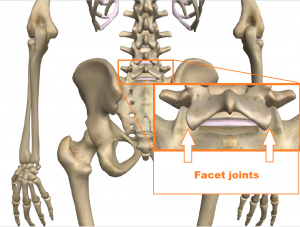Non-Specific Lower Back Pain
Most of us will, at some point in our life, experience significant lower back pain. Often we look for a cause, a smoking gun. We think that if we can avoid the cause, we can avoid the injury. Unfortunately, that is not always the case. Frequently adults will suffer a certain type of mechanical lower back pain called Non-Specific Lower Back Pain. Essentially, there is no smoking gun.
Unlike a disc injury, or sciatica, non-specific lower back pain does not have a clear etiology. The symptoms look very much like sciatica or a low-grade disc injury. But x-rays and MRIs tend to show normal anatomy with no specific injury. What then could be causing the pain?
No one knows for certain what causes non-specific lower back pain. As a chiropractic physician, I tend to lean towards a mechanical issue probably involving the facet joints or proprioception mechanism. Since the debate is on-going, all reasonable treatment plans are considered. Thankfully it responds well to conservative measures. When patients suffering from this condition come in to see me, I usually recommend a series of chiropractic treatments including ultrasound, flexion-distraction, and light joint mobilization. I tend to use an Activator for the first several treatments to loosen up the joints then as the patient feels some improvement, apply slightly more aggressive techniques to restore their spinal health.
My focus on non-specific lower back pain is three fold: reduce swelling, restore segmental mobility, and balance the muscles.
Facet joint swelling and inflammation on the nerve can produce sharp pain with movement. Since the patient is more often concerned about pain instead of decreased range of motion, I want to address their primary concern–get them out of pain as quickly as possible.
Joint fixation or reduced segmental mobility has been shown to increase sensitivity of nerves. The process probably involves nerve endings inside the joint called mechanoreceptors. They monitor the joint position, load and balance. They help maintain erect posture and normal balance of movement. When the small nerve endings are perturbed, the balance of movement can derail producing muscle spasms.
Tight posture muscles can create altered movement patterns and can lead to stiffness and soreness in the back. This is why muscle relaxer medication like cyclobenzaprine is commonly used in treating non-specific lower back pain. The real concern over using medication is safety. If a person can use a non-drug approach and get better results with better safety outcomes, then we ought to employ those alternatives. Using chiropractic is a great option. It’s safe and effective.
When you wake up with a sore back and can’t quite pin the cause of the injury, you might be suffering from non-specific lower back pain. If so, consult a highly-recommended chiropractic physician to get you back on track.
Dr. Andrew White | St George Chiropractor
Featured image courtesy of FreeDigitalPhotos.net and David Castillo Dominci





